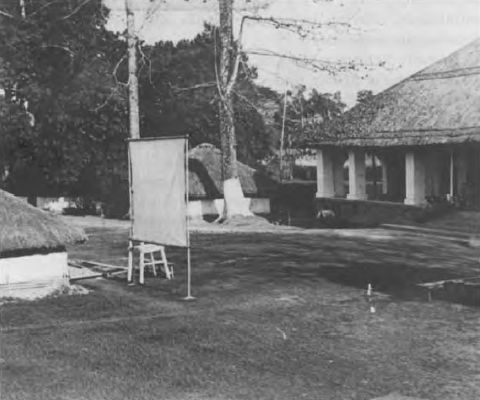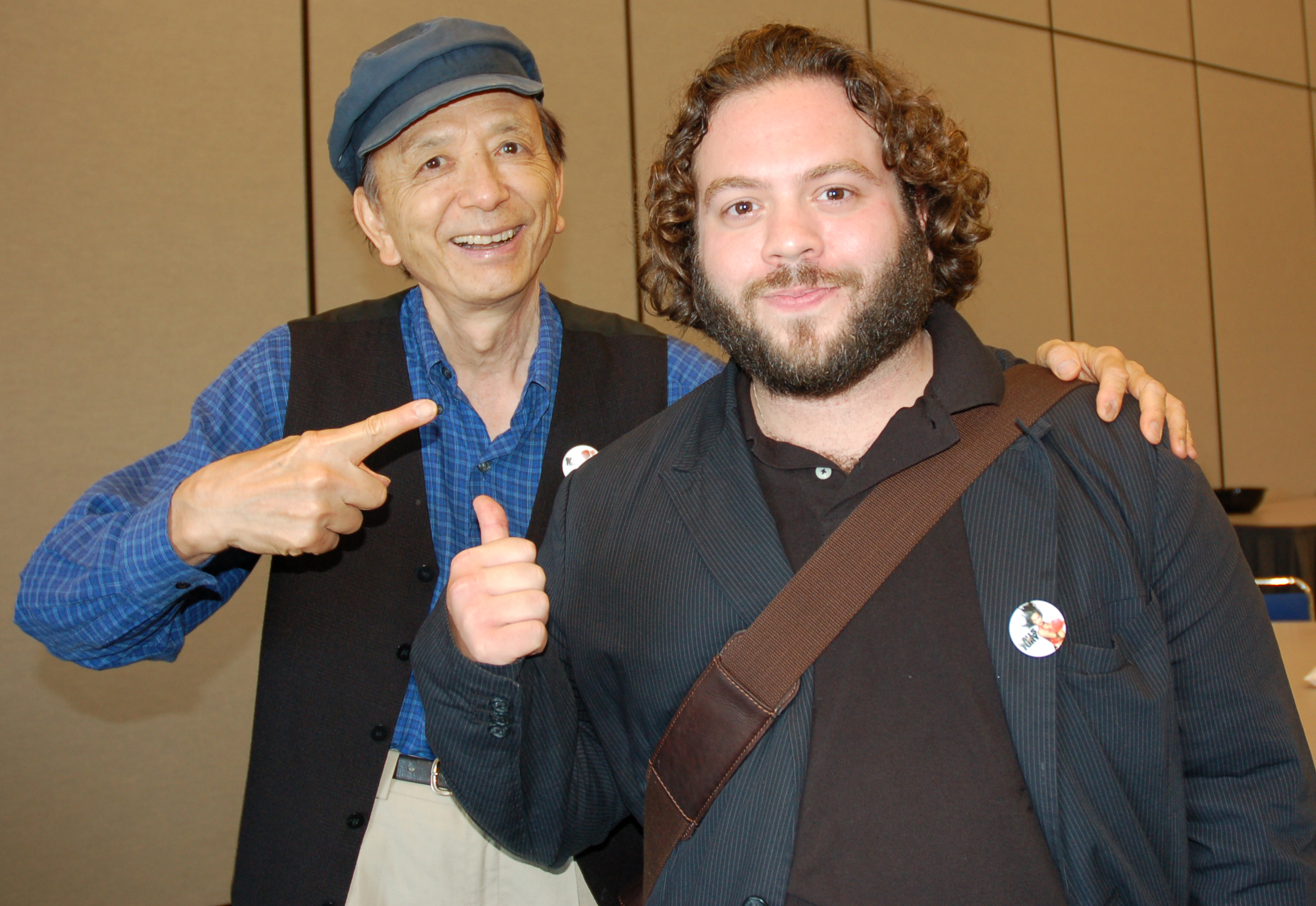|
Never So Few (film)
''Never So Few'' is a 1959 CinemaScope Metrocolor war film, directed by John Sturges and starring Frank Sinatra, Gina Lollobrigida, Peter Lawford, Steve McQueen, Richard Johnson, Paul Henreid, Brian Donlevy, Dean Jones, Charles Bronson, and Philip Ahn, and featuring uncredited roles by renowned Asian actors Mako, George Takei and James Hong. The script was loosely based on an actual OSS Detachment 101 incident recorded in a 1957 novel by Tom T. Chamales. Sinatra's character of Captain Tom Reynolds is based on a real OSS officer and, later, sheriff of Sangamon County, Illinois, U.S. Navy Lt. Meredith Rhule. Plot In 1943 in Burma, a unit of American and British forces under the Office of Strategic Services joins with the native Kachin to hold back a Japanese offensive. The unit, under the joint command of U.S. Army Captain Tom C. Reynolds and British Army Captain Danny De Mortimer, with guidance from Kachin leader Nautaung, remains frustrated by their grueling duty, limited suppl ... [...More Info...] [...Related Items...] OR: [Wikipedia] [Google] [Baidu] |
Reynold Brown
William Reynold Brown (October 18, 1917 – August 24, 1991) was an American realist artist who painted many Hollywood film posters. He was also briefly active as a comics artist. Biography He attended Alhambra High School and refined his drawing under his teacher Lester Bonar. A talented artist, Brown met cartoonist Hal Forrest around 1936-37. Forrest hired Brown to ink (uncredited) Forrest's comic strip ''Tailspin Tommy''. Extensive discussion of the comic strip. Norman Rockwell's sister was a teacher at Alhambra High, and Brown later met Rockwell who advised him to leave cartooning if he wanted to be an illustrator. Brown subsequently won a scholarship to the Otis Art Institute. During World War II he worked as a technical artist at North American Aviation. There he met his wife, fellow artist Mary Louise Tejeda. Following the war Brown drew numerous advertisements and illustrations for magazines such as '' Argosy'', ''Popular Science'', '' Saturday Evening Post'', ''Bo ... [...More Info...] [...Related Items...] OR: [Wikipedia] [Google] [Baidu] |
CinemaScope
CinemaScope is an anamorphic lens series used, from 1953 to 1967, and less often later, for shooting widescreen films that, crucially, could be screened in theatres using existing equipment, albeit with a lens adapter. Its creation in 1953 by Spyros P. Skouras, the president of 20th Century Fox, marked the beginning of the modern anamorphic format in both principal 2.55:1, almost twice as wide as the previously common Academy format's 1.37:1 ratio. Although the technology behind the CinemaScope lens system was made obsolete by later developments, primarily advanced by Panavision, CinemaScope's anamorphic format has continued to this day. In film-industry jargon, the shortened form, 'Scope, is still widely used by both filmmakers and projectionists, although today it generally refers to any 2.35:1, 2.39:1, 2.40:1, or 2.55:1 presentation or, sometimes, the use of anamorphic lensing or projection in general. Bausch & Lomb won a 1954 Oscar for its development of the CinemaScope l ... [...More Info...] [...Related Items...] OR: [Wikipedia] [Google] [Baidu] |
Kachin People
The Kachin peoples ( Jingpo: ''Ga Hkyeng'', ; , ), more precisely the Kachin Wunpong (Jingpo: ''Jinghpaw Wunpawng'', "The Kachin Confederation") or simply Wunpong ("The Confederation"), are a confederation of ethnic groups who inhabit the Kachin Hills in Northern Myanmar's Kachin State and neighbouring Yunnan Province, China, as well as Arunachal Pradesh, Assam in Northeastern India. About one million Kachin peoples live in the region. The term Kachin people is often used interchangeably with the main subset, called the Jingpo people in China. The Jingpho language common to many of the Kachin has a variety of dialects and is written with a Latin-based script created in the late nineteenth century. A Burmese script version was subsequently developed. The Singhpo dialect is spoken in Northeast India and Jingpho in Southwest China. Kachin is an ethnicity that comprises various linguistic groups with overlapping territories and integrated social structures. Contemporary usage of K ... [...More Info...] [...Related Items...] OR: [Wikipedia] [Google] [Baidu] |
Office Of Strategic Services
The Office of Strategic Services (OSS) was the intelligence agency of the United States during World War II. The OSS was formed as an agency of the Joint Chiefs of Staff (JCS) to coordinate espionage activities behind enemy lines for all branches of the United States Armed Forces. Other OSS functions included the use of propaganda, subversion, and post-war planning. The OSS was dissolved a month after the end of the war. Intelligence tasks were shortly later resumed and carried over by its successors the Department of State's Bureau of Intelligence and Research (INR), and the independent Central Intelligence Agency (CIA). On December 14, 2016, the organization was collectively honored with a Congressional Gold Medal. Origin Prior to the formation of the OSS, the various departments of the executive branch, including the State, Treasury, Navy, and War Departments conducted American intelligence activities on an ''ad hoc'' basis, with no overall direction, coordination, or ... [...More Info...] [...Related Items...] OR: [Wikipedia] [Google] [Baidu] |
Illinois
Illinois ( ) is a U.S. state, state in the Midwestern United States, Midwestern United States. Its largest metropolitan areas include the Chicago metropolitan area, and the Metro East section, of Greater St. Louis. Other smaller metropolitan areas include, Peoria metropolitan area, Illinois, Peoria and Rockford metropolitan area, Illinois, Rockford, as well Springfield, Illinois, Springfield, its capital. Of the fifty U.S. states, Illinois has the List of U.S. states and territories by GDP, fifth-largest gross domestic product (GDP), the List of U.S. states and territories by population, sixth-largest population, and the List of U.S. states and territories by area, 25th-largest land area. Illinois has a highly diverse Economy of Illinois, economy, with the global city of Chicago in the northeast, major industrial and agricultural productivity, agricultural hubs in the north and center, and natural resources such as coal, timber, and petroleum in the south. Owing to its centr ... [...More Info...] [...Related Items...] OR: [Wikipedia] [Google] [Baidu] |
Sangamon County
Sangamon County is located in the center of the U.S. state of Illinois. According to the 2010 census, it had a population of 197,465. Its county seat and largest city is Springfield, the state capital. Sangamon County is included in the Springfield, IL Metropolitan Statistical Area. History Sangamon County was formed in 1821 out of Madison and Bond counties. The county was named for the Sangamon River, which runs through it. The origin of the name of the river is unknown; among several explanations is the theory that it comes from the Pottawatomie word ''Sain-guee-mon'' (pronounced "sang gä mun"), meaning "where there is plenty to eat." Published histories of neighboring Menard County (formed from Sangamon County) suggest that the name was first given to the river by the French explorers of the late 17th century as they passed through the region. The river was named to honor "St. Gamo", or Saint Gamo, an 8th-century French Benedictine monk. The French pronunciation "San- ... [...More Info...] [...Related Items...] OR: [Wikipedia] [Google] [Baidu] |
OSS Detachment 101
Detachment 101 of the Office of Strategic Services (formed under the Office of the Coordinator of Information just weeks before it evolved into the OSS) operated in the China-Burma-India Theater of World War II. On 17 January 1956, it was awarded a Presidential Distinguished Unit Citation by President Dwight Eisenhower, who wrote: "The courage and fighting spirit displayed by its officers and men in offensive action against overwhelming enemy strength reflect the highest tradition of the armed forces of the United States." History "On April 14, 1942, William Donovan, as Coordinator of Information (which evolved into the Office of Strategic Services that June), activated Detachment 101 for action behind enemy lines in Burma. The first unit of its kind, the Detachment was charged with gathering intelligence, harassing the Japanese through guerrilla actions, identifying targets for the Army Air Force to bomb, and rescuing downed Allied airmen. Because Detachment 101 was ... [...More Info...] [...Related Items...] OR: [Wikipedia] [Google] [Baidu] |
James Hong
James Hong (; born February 22, 1929) is an American actor, producer and director. He has worked in numerous productions in American media since the 1950s, portraying a variety of roles. With more than 650 film and television credits as of 2022, he is one of the most prolific actors of all time. Hong became known to audiences through starring in the detective series ''The New Adventures of Charlie Chan'' (1957–1958), and through frequent appearances on many television shows including the original ''Hawaii Five-O (1968 TV series), Hawaii Five-O'' (1969–1974), ''Bonanza'' (1960), Perry Mason (1957 TV series), ''Perry Mason'' (1962–1963), ''The Man from U.N.C.L.E.'' (1965–1966), I Spy (1965 TV series), ''I Spy'' (1965–1967), and Kung Fu (1972 TV series), ''Kung Fu'' (1972–1975). He has appeared in numerous films, in both comedic and dramatic roles, including Kahn the butler in ''Chinatown (1974 film), Chinatown'' (1974) and its sequel ''The Two Jakes'' (1990), Hanniba ... [...More Info...] [...Related Items...] OR: [Wikipedia] [Google] [Baidu] |
George Takei
George Takei (; ja, ジョージ・タケイ; born Hosato Takei (武井 穂郷), April 20, 1937) is an American actor, author and activist known for his role as Hikaru Sulu, helmsman of the fictional starship USS ''Enterprise'' in the television series ''Star Trek'' and subsequent films. Takei was born to Japanese American parents, with whom he lived in U.S.-run internment camps during World War II. He began pursuing acting in college, which led in 1965 to the role of Sulu, to which he returned periodically into the 1990s. Upon coming out as gay in 2005, he became a prominent proponent of LGBT rights and active in state and local politics. He has been a vocal advocate of the rights of immigrants, in part through his work on the 2012 Broadway show ''Allegiance'', about the internment experience. Although Takei was born and raised in California, he spoke both English and Japanese growing up and remains fluent in both languages. He has won several awards and accolades for his ... [...More Info...] [...Related Items...] OR: [Wikipedia] [Google] [Baidu] |
Mako (actor)
was a Japanese-American actor, credited mononymously in almost all of his acting roles as simply Mako. His film roles include Po-Han in ''The Sand Pebbles'' (1966) (for which he was nominated for the Academy Award for Best Supporting Actor), Oomiak "The Fearless One" in ''The Island at the Top of the World'' (1974), Akiro the Wizard in ''Conan the Barbarian'' (1982) and '' Conan the Destroyer'' (1984), and Kungo Tsarong in ''Seven Years in Tibet'' (1997). He was part of the original cast of Stephen Sondheim's 1976 Broadway musical ''Pacific Overtures'', which earned him a Tony Award nomination for Best Actor in a Musical. He was also one of the founding members of East West Players. Later in his career, he became well known for his voice acting roles, including Aku in the first four seasons of ''Samurai Jack'' (2001–2004), and Iroh in the first two seasons of ''Avatar: The Last Airbender'' ( 2005–2006). He died on July 21, 2006, aged 72, from esophageal cancer. Early ... [...More Info...] [...Related Items...] OR: [Wikipedia] [Google] [Baidu] |
Asia
Asia (, ) is one of the world's most notable geographical regions, which is either considered a continent in its own right or a subcontinent of Eurasia, which shares the continental landmass of Afro-Eurasia with Africa. Asia covers an area of , about 30% of Earth's total land area and 8.7% of Earth's total surface area. The continent, which has long been home to the majority of the human population, was the site of many of the first civilizations. Its 4.7 billion people constitute roughly 60% of the world's population. In general terms, Asia is bounded on the east by the Pacific Ocean, on the south by the Indian Ocean, and on the north by the Arctic Ocean. The border of Asia with Europe is a historical and cultural construct, as there is no clear physical and geographical separation between them. It is somewhat arbitrary and has moved since its first conception in classical antiquity. The division of Eurasia into two continents reflects East–West cultural, linguistic, ... [...More Info...] [...Related Items...] OR: [Wikipedia] [Google] [Baidu] |
Philip Ahn
Philip Ahn (born Pillip Ahn (), March 29, 1905 – February 28, 1978) was an American actor and activist of Korean descent. With over 180 film and television credits between 1935 and 1978, he was one of the most recognizable and prolific Asian-American character actors of his time. He is widely regarded as the first Korean American film actor in Hollywood. The son of Korean independence activist Ahn Changho, Ahn was a longtime advocate for his father's legacy and the Korean-American community, helping to establish memorials to his father in his native Seoul and later arranging for his remains to be buried there. Early life and education Ahn was born in the Highland Park neighborhood of Los Angeles, California on March 29, 1905. His given name Philip was an Anglicized version of the Korean name Pil Lip (). His parents, Ahn Changho (도산 안창호) and Yi Hyeryon (이혜련), were both Korean emigrants who had moved to the United States in 1902, making him the first Ameri ... [...More Info...] [...Related Items...] OR: [Wikipedia] [Google] [Baidu] |









